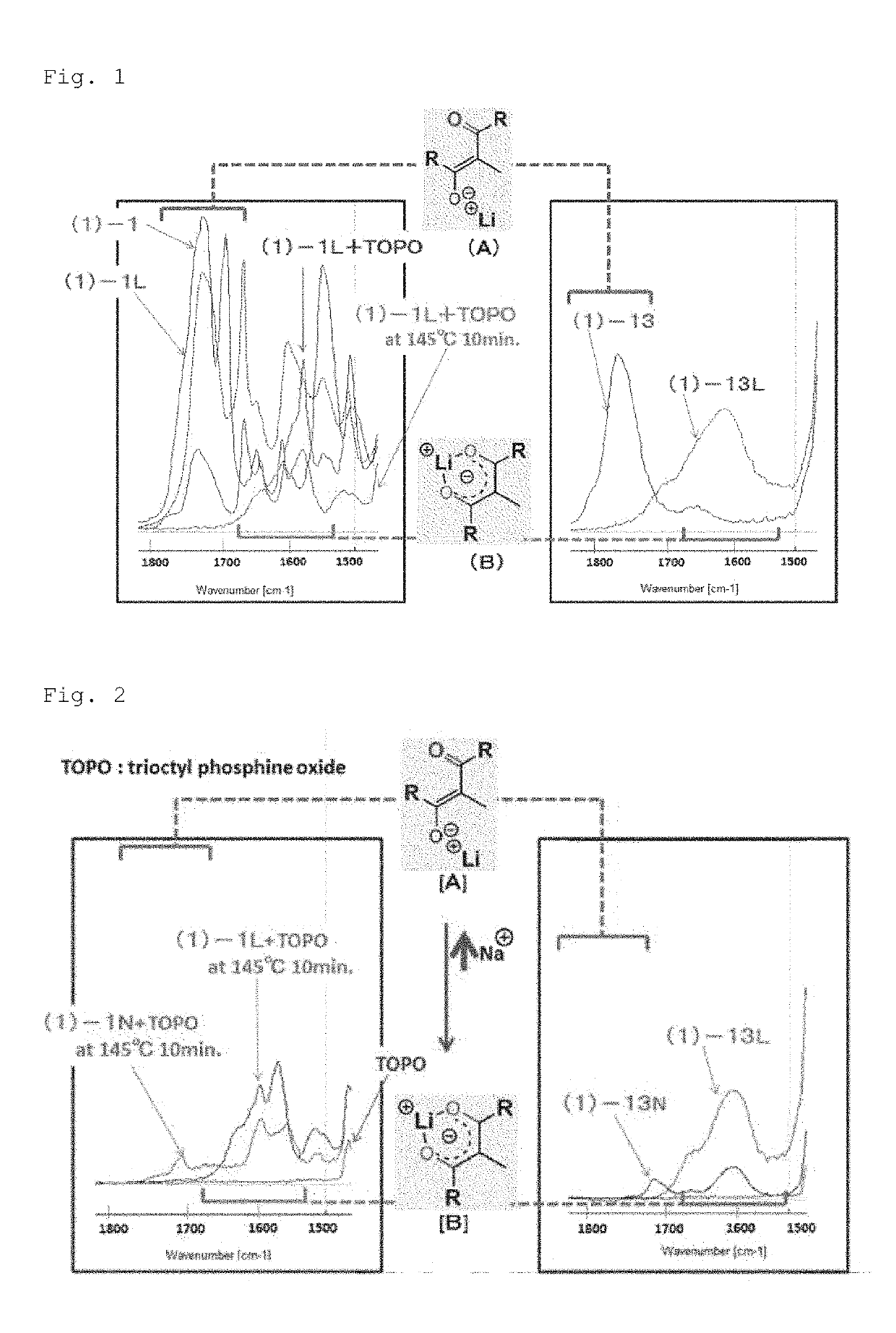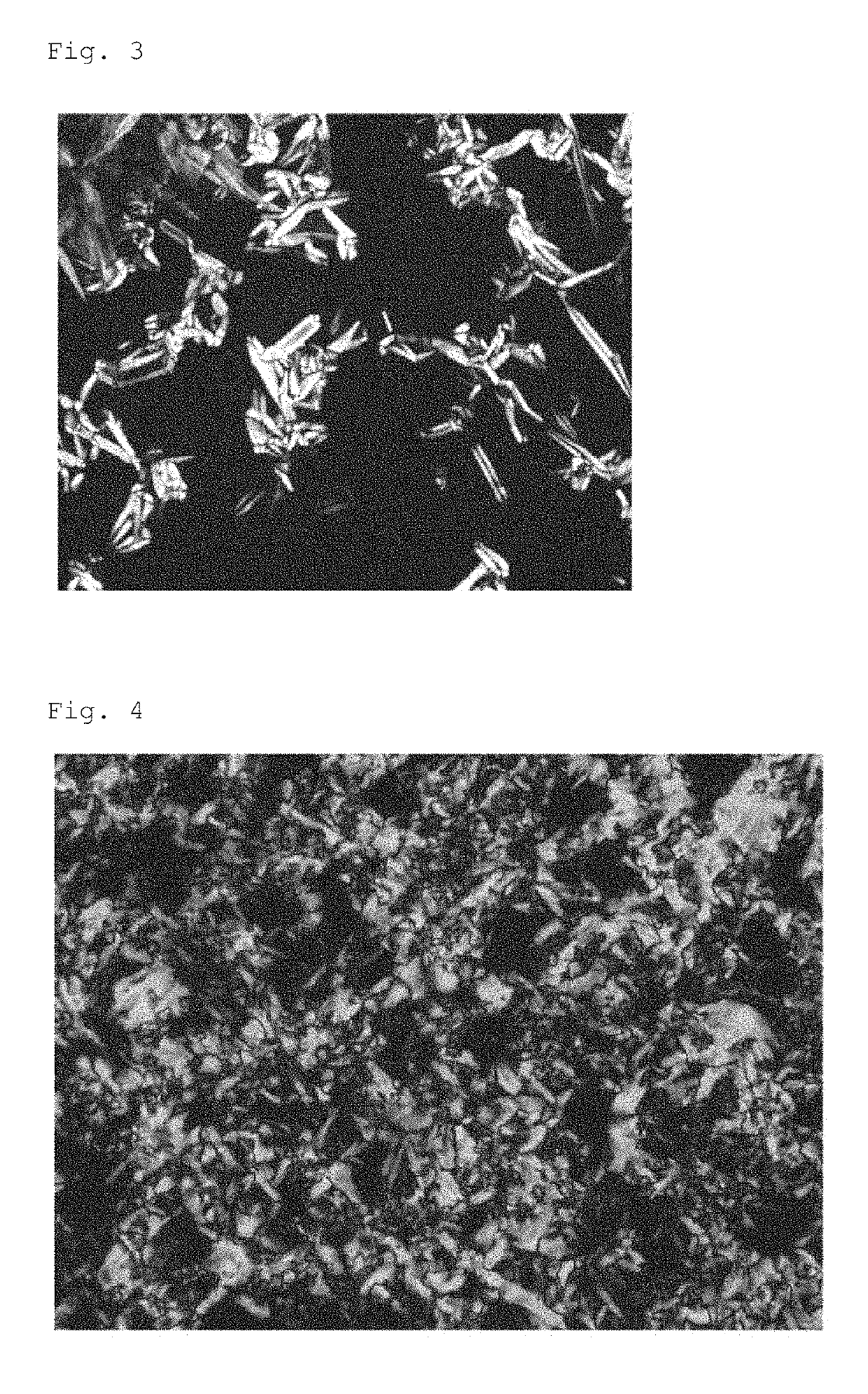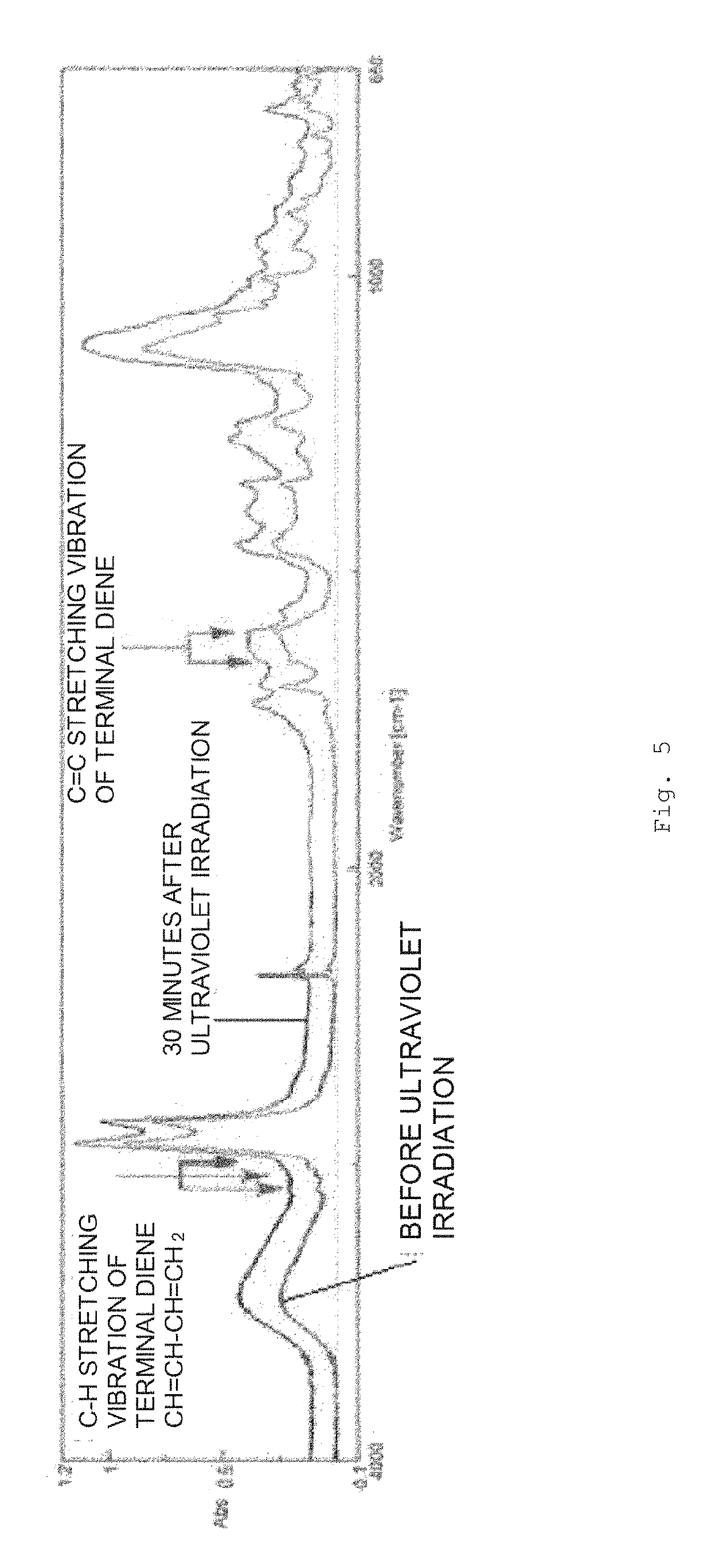Compound and synthesis method therefor
a technology of acetylacetone and derivative, applied in the direction of cation exchanger materials, group 5/15 element organic compounds, water/sewage treatment by ion exchange, etc., can solve the problems of inconvenient synthesis methods and hardly known, and achieve the effects of high reactivity, efficient capture of metals, and difficult control of reaction
- Summary
- Abstract
- Description
- Claims
- Application Information
AI Technical Summary
Benefits of technology
Problems solved by technology
Method used
Image
Examples
synthesis example 1
[0154]Synthesis of compound (1)-1
[0155]Step 1: Synthesis of 2-(((4-(2-bromoacetyl)phenoxy)carbonyl)amino)ethyl methacrylate (1)-1a
[0156]To a dried tetrahydrofuran (4.0 mL) solution of 2-bromo-1-(4-hydroxyphenyl)ethane-1-one (2.23 g, 10.4 mmol) and 2-isocyanoethyl methacrylate (1.60 mL, 11.3 mmol), triethylamine (0.35 mL, 2.5 mmol) was slowly added at 0° C. Thereafter, the mixture was stirred at room temperature for 3 hours. The reaction mixture was added to dilute hydrochloric acid (ca. 5%), and the product was extracted with ethyl acetate. An organic phase was washed with water, and then dried with anhydrous sodium sulfate. The solvent was removed by distillation after filtration, and then a crude produce was purified with column chromatography (silica, n-hexane:ethyl acetate (2:1)), and dried in vacuo, thereby obtaining the title compound as a white solid (yield amount of 3.01 g, yield rate of 81%).
[0157]1H NMR (400 MHz, DMSO, δ): 8.10 (t, 1H), 7.95 (d, 2H), 7.25 (d, 2H), 6.06 (d,...
synthesis example 2
Synthesis of Compound (1)-2
[0161]
[0162]Step 1: Synthesis of 5,5,5-trifluoro-1-(4-hydroxyphenyl)-3-(2,2,2-trifluoroacetyl)pentane-1,4-dione (1)-2
[0163]To an acetone (10.0 mL) solution of 1,1,1,5,5,5-hexafluoropentane-2,4-dione (5.31 mL, 37.5 mmol), potassium hydroxide (2.18 g, 38.9 mmol) and polyethylene glycol 400 (0.75 mL) were added at room temperature. After stirring for 2 hours, 2-promo-1-(4-hydroayphenyl)ethane-1-one (8.065g, 37.5 mmol) was added thereto. Thereafter, the mixture was heated to reflux for 10 hours. After concentrating the reaction mixture, dilute hydrochloric acid (ca. 5%) was added, and the product was extracted with ethyl acetate. An organic phase was washed with water, and then dried with anhydrous sodium sulfate. The solvent was removed by distillation subsequent to filtration, and then a crude product was purified with column chromatography (silica, chloroform:ethyl acetate (2:1)), and dried in vacuo, thereby obtaining the title compound as a white solid (yi...
synthesis example 3
Synthesis of Compound (1)-13
[0166]
[0167]Step 1: Synthesis of 3,6,9,12-tetraoxyoctacosane-1-ol (1)-13b
[0168]To a tetrahydrofuran (250 mL) solution of hexadecanol (84.3 g, 348 mmol), methanesulfonyl chloride (41.84 g, 365 mmol) was slowly added under ice cooling, and then pyridine (30.0 mL, 365 mmol) was added thereto. Thereafter, the mixture was stirred at room temperature for 10 hours. The reaction mixture was concentrated, and added to dilute hydrochloric acid (ca. 5%), and the product was extracted with ethyl acetate. An organic phase was washed with water, and then dried with anhydrous sodium sulfate. The solvent was removed by distillation subsequent to filtration, and the product was dried in vacuo, thereby obtaining hexadecylmethane sulfonate as a colorless solid.
[0169]To tetraethylene glycol (35.6 g, 183 mmol), t-butoxy potassium (6.06 g, 54.0 mmol) was added at room temperature, stirred for 30 minutes, and then heated at 140°C. 2-bromo-1-(4-hydroxyphenyl)ethane-1-one (8.065 ...
PUM
| Property | Measurement | Unit |
|---|---|---|
| pKa | aaaaa | aaaaa |
| crystallinity | aaaaa | aaaaa |
| structure | aaaaa | aaaaa |
Abstract
Description
Claims
Application Information
 Login to View More
Login to View More - R&D
- Intellectual Property
- Life Sciences
- Materials
- Tech Scout
- Unparalleled Data Quality
- Higher Quality Content
- 60% Fewer Hallucinations
Browse by: Latest US Patents, China's latest patents, Technical Efficacy Thesaurus, Application Domain, Technology Topic, Popular Technical Reports.
© 2025 PatSnap. All rights reserved.Legal|Privacy policy|Modern Slavery Act Transparency Statement|Sitemap|About US| Contact US: help@patsnap.com



